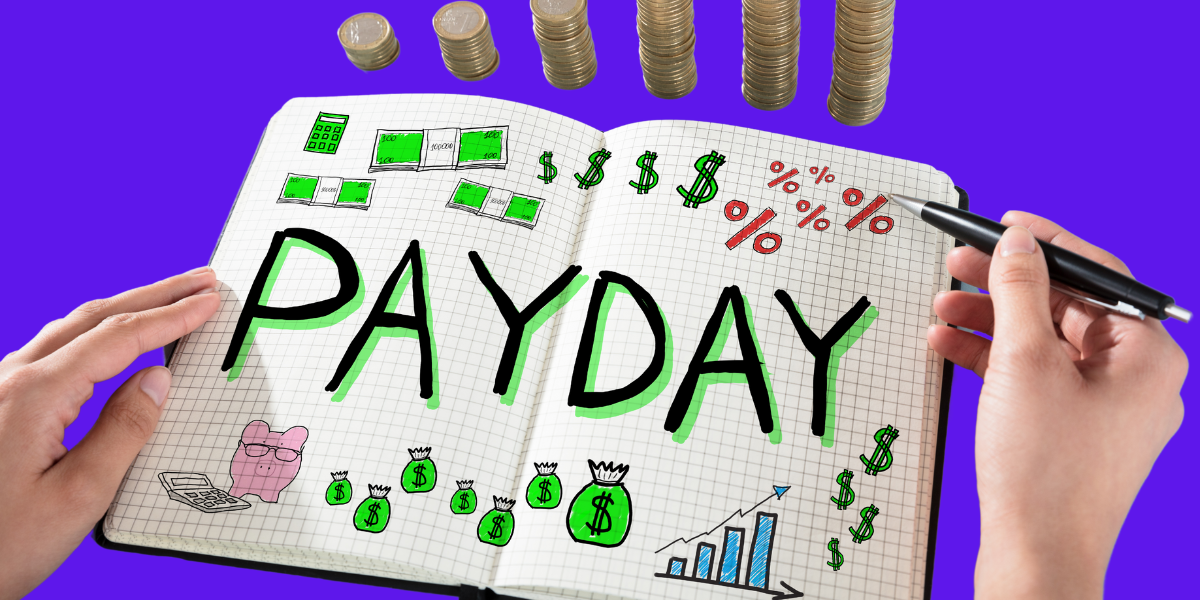People who practise FIRE (Financial Independence, Retire Early) figure out ways to save and invest enough of their income early on so they can retire ASAP and live off their gains.
Essentially – they keep getting paid, just for living.
But even if you don’t want to follow their lead, you could potentially set up your finances so your bank account swells even when it’s not payday.
Let us count the ways.
(This article has examples that are general in nature to show different ways people could make money from money decisions, but it’s not intended as financial advice. Returns are never guaranteed and we always recommend seeking independent financial advice.)
1. Collect dividends
Picture this:
You’re lying on your bed, when your phone buzzes with a transaction notification from your bank.
“Where’s this $60 credit come from?” you ask yourself, and then you realise that one of your investments has paid you a half-yearly dividend into your bank account.

What are dividends?
Some companies choose to distribute some of their company earnings to their shareholders by paying a proportion of money per share.
This means, if you own shares in a dividend-paying company, you can receive a proportion of their earnings whenever they pay them.
Not all companies pay dividends, with some choosing to reinvest in their growth, for example. Microsoft and Apple have been known to pay dividends, while others in the Magnificent Seven including Amazon, Alphabet (Google) and Tesla don’t at the time of writing.
How much can you make from dividends?
The amount you make from dividends depends on the amount of shares you hold, and whether you choose to cash out or reinvest your earnings.
By cashing out, you may get the money now, but by reinvesting, you could benefit from compound growth (but remember, stocks don’t always go up).
There are also tax implications related to whether the company itself has already paid tax.
It’s best to speak to your accountant or financial advisor to get personal financial advice.
Any catches?
You generally need to have invested a significant amount in dividend paying stocks to get a return you could live off - or even use to fund a holiday.
You’ll also need to hold onto your shares if you want to earn their dividends.
Some commentators hypothesise that you need a portfolio of about $1 million to make $50,000 in dividends each year, assuming a 5% dividend yield.
Still, dividend investing is a strategy many long-term investors pursue.
2. Benefit from capital growth
Picture this:
You’re drinking your first coffee of the day, when you log into your micro-investing app.
Your consistency and patience with years of investing has paid off, because now you’re $10,000 in the green.
You withdraw some of this to fund an upcoming holiday, but leave the rest to grow.

What is capital growth?
Capital growth is when the value of an investment increases over time.
Ideally, the current market value of an asset you own will be more than you paid for it, and you’ll be able to benefit from the difference, known as your capital growth.
You could benefit by skimming some profit from the top, and leaving the principal to grow; by using it as an investment to borrow against; or just by cashing out and taking the win.
How much can you make from capital growth?
The amount you make from capital growth can depend on your risk tolerance and choice of investments.
Generally, the more volatile an asset, the higher its potential for growth, if you can stomach the turbulence.
(That’s a big ‘if’ – which you’ll know if you’ve experienced the stock market over the last couple of years!) Here’s some more on risk vs. reward when it comes to long-term investing.
Any catches?
If you make money from capital gains, you’ll generally need to pay tax on them in your tax return. This is known as Capital Gains Tax and it can get a bit tricky.
There’s no guarantee that your investments will appreciate - even if you think you’re onto a sure thing (hint - infuriatingly, there’s no such thing).
3. Collect on interest
Picture this:
It’s the first day of the month, and you open your banking app to check out your high interest savings account.
Success!
It’s earned you more than $100 in just one month, and all you had to do was increase your balance, and make a few transactions.

What is interest?
For individuals, interest is the cost of borrowing money and the benefit of lending it to financial institutions, including through savings accounts and term deposits.
When you keep your money at a bank, the bank can use that money to make more money, such as by investing it.
In return, it may give you an increased percentage rate to encourage you to leave it there.
How much can you make from interest?
Historically, compound interest seemed mythical - you learned about it in school but it never appeared in your bank account.
But when the cost of borrowing money started skyrocketing over the past few years, the cost of lending kept pace – with Finder reporting that as at October 2023, some savings accounts were offering up to 5.5% interest, having risen as high as 7.3% in 2008. (At the start of 2022, however, it had been as low as 0.05%.)
Any catches?
To receive maximum interest rates, you may need to fulfill certain obligations such as increasing your balance or regularly depositing specific amounts of money.
The amount you receive on your money may be less than you could earn by investing the same amount in the stock market.
However, savings accounts are low-risk investments, according to MoneySmart, which also notes that the Government guarantees deposits in some accounts for up to $250,000, which the stock market does not do.
4. Other ways to make money just for being alive
Picture this:
You’re sailing on your yacht – OK, your friend’s yacht.
A smaller boat putters up, selling a selection of ice creams (no really – this exists).
You shout your friends a Calippo each, and reapply your sunscreen.
Life is good.

- Double check you’re not missing any money you’re entitled to
- Find out if you can monetise something you already do
- Make sure you’re across more ways you can make passive income



